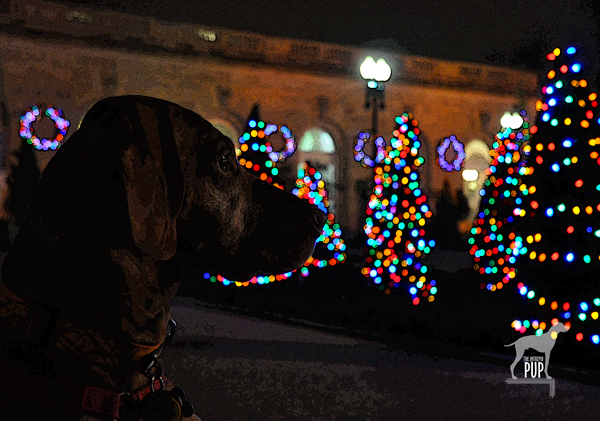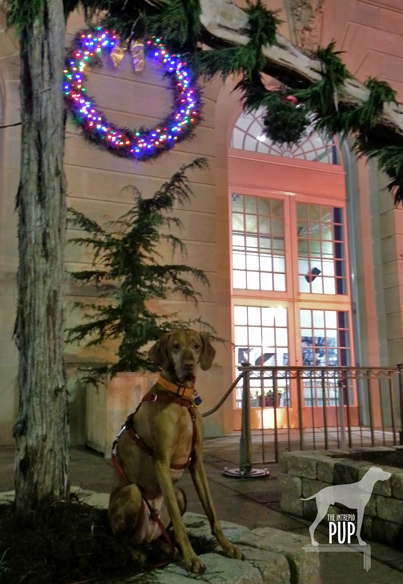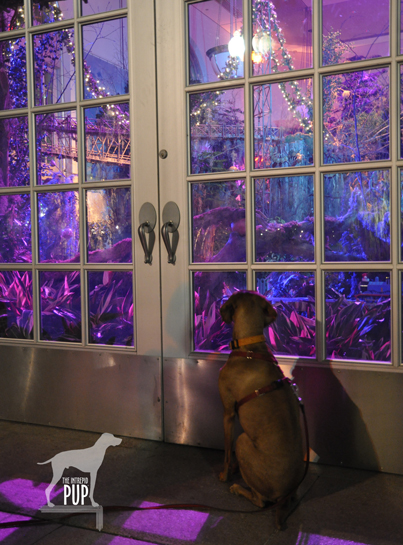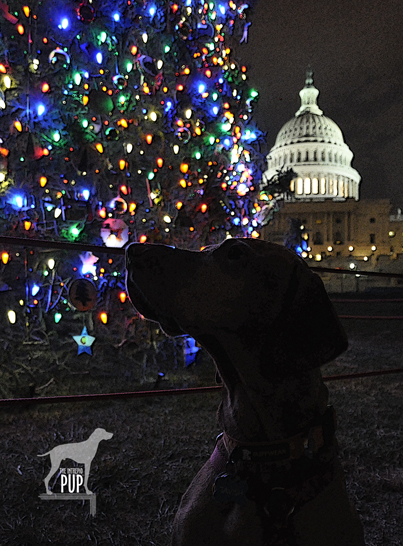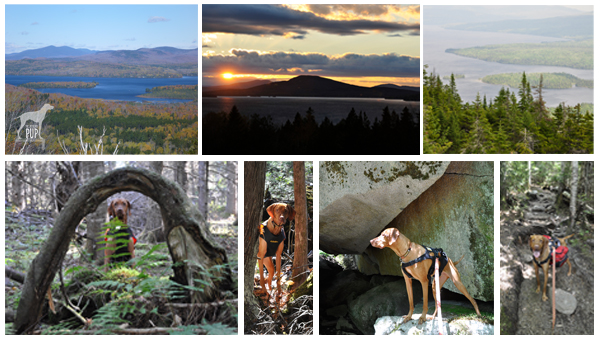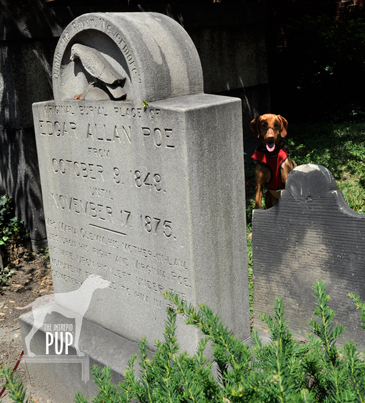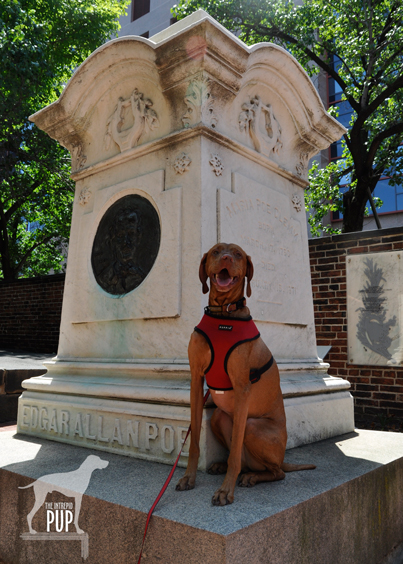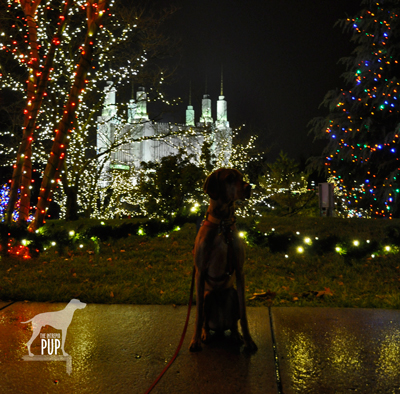
Even raindrops can’t keep Tavish from basking in the glow of 600,000 lights at the Washington D.C. Temple.
Tavish the Intrepid Pup continues on the howl-iday trail throughout the greater Washington metro area. Stops so far have included the Capitol Christmas Tree and the U. S. Botanic Garden’s “Season’s Greenings.” Next on his itinerary: the annual Festival of Lights at The Church of Jesus Christ of Latter-day Saints.
The site is a study in juxtapositions. Called the Washington D.C. Temple, it’s actually physically located in Kensington, Maryland. The maelstrom that is the Capital Beltway is just a stone’s throw away with more than 250,000 vehicles a day passing in the Temple’s shadow. And yet the Temple sits upon 52 beautifully wooded acres—in the midst of a residential neighborhood, really. The glistening facade of white Alabama marble looks like nothing else in the area, but it still manages to blend in harmoniously.
When it opened in 1974 it was only the 16th operating Temple; today there are more than 140. Six spires rise to 288 feet, making this Temple the Church’s tallest. While the adjacent Visitors’ Center is free and open year-round, visitation soars during the annual Festival of Lights celebration.
 Dogging the Details
Dogging the Details
39°0′56.07″N, 77°3′56.21″W
Festival of Lights, Washington D.C. Temple – The Church of Jesus Christ of Latter-day Saints, Kensington, Maryland
The 35th Annual Festival of Lights runs from November 30, 2012 through January 1, 2013 with the lights coming on at dusk. Free concerts are offered nightly in the Visitors’ Center at 7pm and again at 8pm, with tickets available 90 minutes prior to each performance.
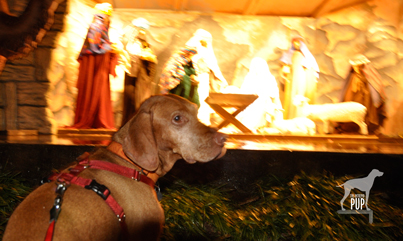
Tavish gazes upon the life-sized crèche outside the Washington D.C. Temple Visitors’ Center.
Team Tavish had the misfortune of timing this visit with a torrential downpour, so we didn’t stay nearly as long as we would have liked. The up-side to the weather, however, was that all 600,000 lights looked extra-spectacular reflecting off the drenched pavement. Tavish wasn’t too keen about getting rained upon but kept still long enough for a few photos as we gawked at the lights and stopped at the life-sized crèche.
Admission to the grounds is free. Non-Mormons are not permitted in the Temple itself, but all (well, excluding dogs) are welcome in the Visitors’ Center. When we arrived, crowds of people were streaming in to hear the first concert of the evening and see the displays of decorated Christmas trees and more than 100 nativity scenes from around the world. Had the Intrepid Pup not been with us, we would have ventured in as well!
The Festival of Lights earns a “1″ on the Intrepid Pup’s wag-a-meter for illuminating the joys of the season!

